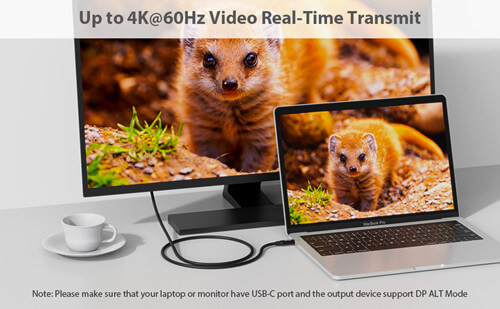What is the USB 3.1 cable specification?
The USB 3.1 specification defines two operation modes:
1. USB 3.1 Gen 1 (SuperSpeed):
Signaling rate: 5 Gbit/s.
Uses 8b/10b encoding.
Nominal data rate: 500 MB/s.
Replaces USB 3.0.
2. USB 3.1 Gen 2 (SuperSpeed+):
Signaling rate: 10 Gbit/s.
Uses 128b/132b encoding.
Nominal data rate: 1212 MB/s.
For detailed compliance standards and requirements, you can refer to the Cables and Connectors Class Document by USB-IF. Additionally, you can find the USB 3.1 Legacy Cable and Connector Specification in Revision 1.0 on the USB-IF website.
How can I identify a USB-C cable that supports SuperSpeed+ (Gen 2)?
To identify a USB-C cable that supports SuperSpeed+ (Gen 2), look for the following features:
1. Certification: Choose cables that are USB-IF certified for SuperSpeed+ (USB 3.1 Gen 2). These cables meet industry standards and ensure reliable performance.
2. Data Transfer Rate: Look for cables that explicitly mention 10 Gbps data transfer rates. This indicates support for SuperSpeed+.
Can I plug a USB-C into a USB 3.1 port?
Certainly! You can plug a USB-C cable into a USB 3.1 port. USB-C is a versatile connector that works with various USB standards, including USB 3.1, 3.0, and 2.0. It’s reversible, so you can insert it either way without worrying about orientation1. Keep in mind that the maximum data transfer speed depends on the specific cable and devices you’re using. For Thunderbolt 3 ports, they also function as USB-C ports, offering even faster speeds when using compatible cables.
What's the difference between USB-C and Thunderbolt?
USB-C and Thunderbolt share identical physical connectors, but they have key differences:
1. USB-C (Universal Serial Bus - Type C):
Developed by the USB Implementers Forum (USB-IF).
Widely adopted and versatile.
Supports data transfer speeds up to 20Gbps (depending on the specific USB SuperSpeed rating).
Can deliver up to 100 watts of power for charging devices.
Used in external hard drives, smartphones, laptops, and more
2.Thunderbolt:
Developed by Intel and Apple.
Requires higher minimum specs for power, data, and video.
Offers faster speeds (up to 40Gbps) than USB-C.
Can handle multiple displays, external GPUs, and other high-performance tasks.
Thunderbolt 3 and 4 ports look identical to USB-C ports but provide additional capabilities1
In summary, Thunderbolt is a superset of USB-C, meaning you can use a USB-C device with a Thunderbolt 3 or 4 port, but not vice versa. Choose based on your specific needs!
Send your message to us:
Post time: Jun-18-2024
